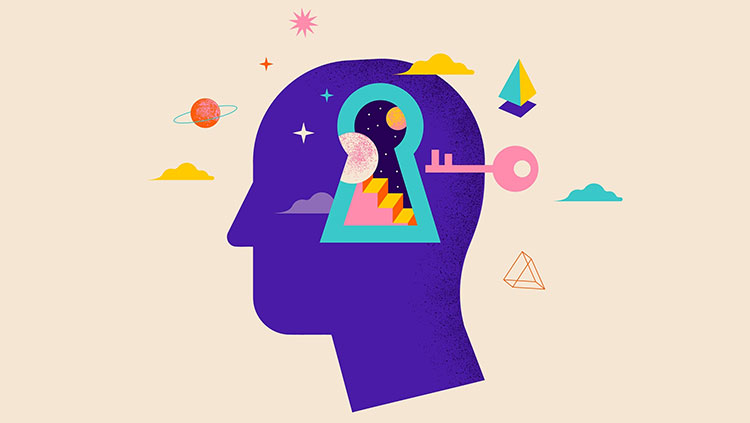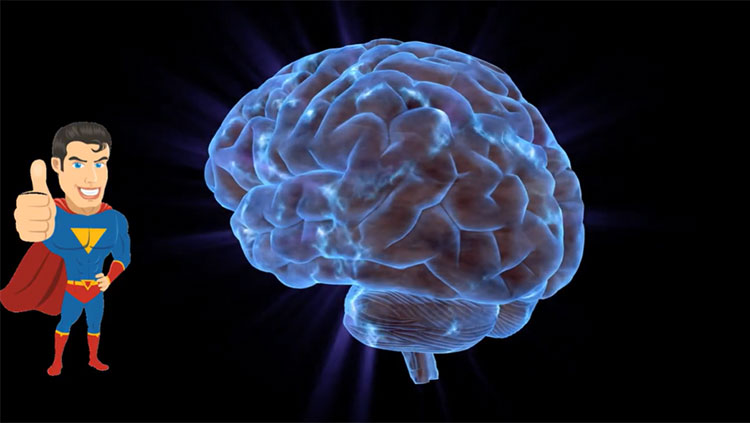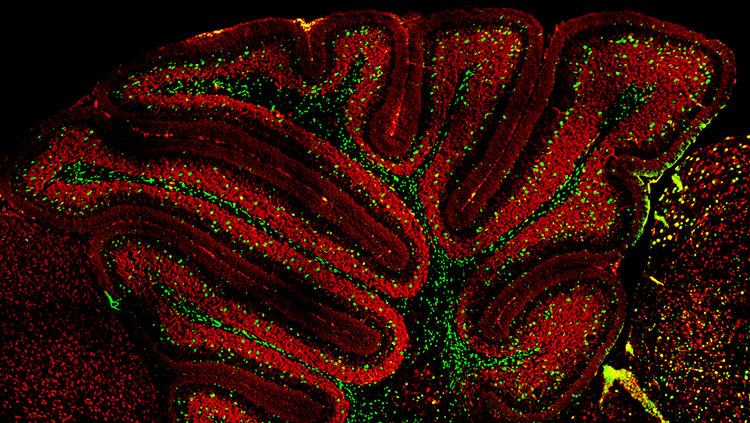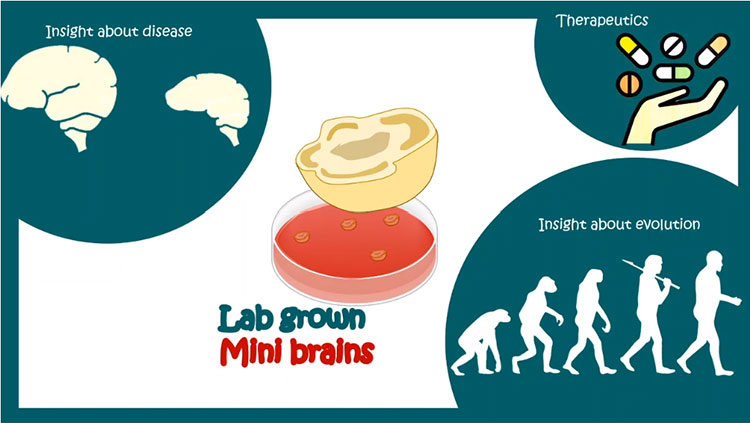Estrogen and the Developing Brain
- Published16 Jul 2015
- Reviewed16 Jul 2015
- Author Matthew Davis
- Source BrainFacts/SfN
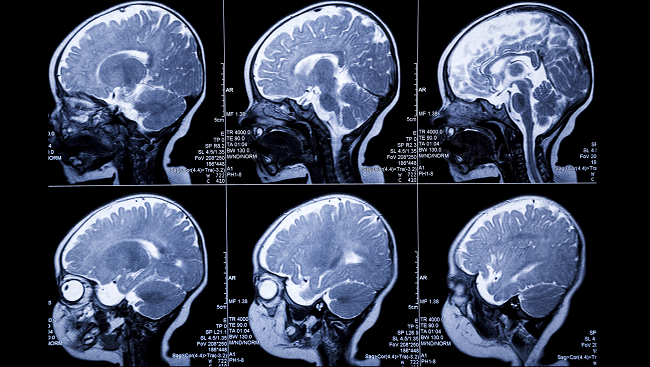
Exposure to estrogen can cause certain parts of the brain to develop differently.
Credit: iStockPhoto.com
When we think about estrogen, we usually think of its role in female ovulation and menstrual cycles. But researchers are discovering that estrogen also plays a very large role in another part of the body — the brain.
The sex steroid is involved in a complicated array of biological processes that mold our brain circuitry into its essential components both very early in life and later in adolescence. The amount of estrogen in the body and the timing of its arrival differ in males and females, and this appears to influence the shaping of male and female brains.
Exposure to Estrogen
Our first exposure to estrogen happens in the womb when we absorb it from our mothers. But the biggest source of estrogen is the gonads — the testicles in males and the ovaries in females. Scientists are also learning that our brains act as a sort of microbrewer of estrogen, producing small amounts locally to power specific areas of brain development and supplement the large quantities periodically manufactured by our gonads.
Exposure to estrogen causes certain parts of the brain to develop differently in males and females.
“When we discuss differences in male and female brain development, we are not venturing into the men are from Mars and women are from Venus territory,” says Margaret M. McCarthy, a neuroscientist at the University of Maryland School of Medicine whose research focuses on the influence of estrogen and other hormones on brain development. “We mean that a portion of the brain in females develops differently than males, and this broad class of steroid hormones we call estrogen plays a big role in creating these differences.”
While estrogen is most often associated with women, early in life it is far more abundant in men than it is in women. In fact, estrogen’s role in developing a distinctly female brain is, to a certain extent, a product of its absence, not its presence.
Starting before boys are even born, their testicles are producing large amounts of testosterone. This testosterone is quickly converted into estrogen through a process called aromatization. The estrogen then makes its way to the brain via the circulatory system.
Meanwhile, in developing and newborn girls, the ovaries are pretty quiet on the estrogen front. That changes in a big way when puberty arrives, but early in life, in what is known as the neonatal period, female brains get less estrogen than male brains. This absence of estrogen appears to allow parts of the female brain to develop attributes that are distinctly different from males.
In other words, remove the testicles from the picture and estrogen production very early in life might be similar in males and females — and some of those brain differences might disappear.
However, these differences in brain development do not make one sex weaker or stronger in the brain department, McCarthy says, just a little bit different. Imaging studies suggest that male and female brains perform at similar levels, even if they may sometimes use different brain pathways to execute various mental tasks.
Matching Mental Software With Sexual Hardware
Male and female brains are exposed to different amounts of estrogen during development, and this appears to shape some regions of the brain differently. One of these regions is the hypothalamus, which controls a variety of basic functions including hunger, mood, and sex drive. Estrogen appears to affect the development of areas of the hypothalamus related to reproduction.
For example, the density of one type of brain cell in an area known as the medial pre-optic area (MPOA) is twice as great in males as it is in females. In studies in rodents, this difference has been linked to male sexual behavior, such as attempts to mate with female rodents. Another subdivision of the hypothalamus called the anteroventral periventricular nucleus (AVPV) is enlarged in females, and this is linked to female reproductive biology — specifically to prompting the periodic surge in a hormone that triggers ovulation.
Estrogen seems to have the capacity to both facilitate and suppress brain cell production during development. In males, the estrogen that originates in the testicles fuels brain cell proliferation in areas like the MPOA and inhibits cell production in other areas. Meanwhile, in the female brain, the same process is at work, only in reverse: The absence of estrogen streaming from the gonads frees up the female brain to produce more cells in the AVPV, even as this same lack of estrogen seems to be limiting cell production in other places.
Sexual differences in brain development are seen in both humans and animals, and given that some of these differences appear to be linked to reproductive behavior, McCarthy says it may simply be the way that the brain develops the capacity to perpetuate the species.
While estrogen guides the development of male and female brains, most neuroscientists who study the sex steroid aren’t driven by solely by a desire show how males and females are different, McCarthy says.
“Studying sex differences is a way to learn about how the brain functions and see the mechanisms of brain development more clearly,” she says. “It’s not about trying to define ‘his and her’ brains. The brain is a mosaic and all of us are a combination of relative maleness and femaleness. And estrogen is one of the hormones that plays an important role in creating this mosaic.”
CONTENT PROVIDED BY
BrainFacts/SfN
References
Ahmed EI, Zehr JL, Schulz KM, Lorenz BH, DonCarlos LL, et al. Pubertal hormones modulate the addition of new cells to sexually dimorphic brain regions. Nature Neuroscience. 11(9): 995-997 (2008).
Lenroot RK, Giedd JN. Sex differences in the adolescent brain. Brain and Cognition. 72(1): 46-55 (2010).
McCarthy MM. Estradiol and the devloping brain. Physiology Reviews. 88(1): 91-124 (2008).
McCarthy MM, Pickett LA, VanRyzin JW, Kight, KE. Surprising origins of sex differences in the brain. Hormones and Behavior. (2015).
Nugent BM, Wright CL, Shetty AC, Hodes GE, Lenz KM. Brain feminization requires active repression of masculinization via DNA methylation. (2015).
Sisk CL, Zehr JL. Pubertal hormones organize the adolescent brain and behavior. Frontiers in Neuroendocrinology. 26: 163-174 (2005).
What to Read Next
Also In Brain Development
Trending
Popular articles on BrainFacts.org





